As year end approaches, C corporations, like individuals, should decide when and how to shift income and deductions between 2016 and 2017. Although C corporations will generally benefit from the deferral of income and the acceleration of deductions in the same way as individuals, there are a number of special rules that should be taken into account.
Take, for example, a corporation subject to the 39% “bubble”. Corporate taxable income between $100,000 and $335,000 is taxed at the rate of 39% to phase out the benefits of the 15% and 25% brackets that apply to a corporation’s first $75,000 of taxable income.
Taxable income between $75,000 and $100,000, and between $335,000 and $10 million, is taxed at 34%. Taxable income over $10 million is taxed at 35%, except that there is also a 38% “bubble” that applies to corporate taxable income between $15 million and $18,333,333 to eliminate the benefit of the 34% rate.
Illustration Assume a C corporation expects taxable income of about $90,000 for 2016, but expects its income to go well over $100,000 in 2017. Accelerating $10,000 in income from 2017 to 2016 will save about $500 in taxes since the $10,000 will be taxed at only 34% instead of 39% ($10,000 × 5% = $500). This represents a return of 14.7% on the $3,400 used to make the early tax payment ($500 divided by $3,400).
Observation: Similar considerations apply to situations where the acceleration of income from 2017 into 2016 will prevent the corporation from moving into other higher tax brackets next year, say from the 15% bracket into the 25% bracket, or from the 35% bracket into the 38% “bubble” that applies to corporate taxable income between $15 million and $18,333,333.
Qualifying for the small corporation AMT exception. The tentative minimum tax of a corporation is zero for any tax year that it qualifies as a small corporation meeting a “gross receipts test”. A corporation will qualify if:
- The corporation’s average annual gross receipts for all three-tax-year periods beginning after Dec. 31, ’93 and ending before the tax year do not exceed $7.5 million; and
- The corporation’s average gross receipts do not exceed $5 million for the corporation’s first three-tax-year period taken into account in (i).
Illustration A calendar-year corporation was created on Jan. 1, 2009. To qualify as a small corporation for 2016,
- The corporation’s average gross receipts for the three-tax-year period 2009 through 2011 must be $5 million or less, and
- The corporation’s average gross receipts for the 2010 through 2012 period, the 2011 through 2013 period, the 2012 through 2014 period, and the 2013 through 2015 period must be $7.5 million or less.
If the corporation qualifies for 2016, the corporation will qualify for 2017 if its average gross receipts for the three-tax-year period 2014 through 2016 is also $7.5 million or less. If the corporation does not qualify for 2016, it can’t qualify for 2017 or any later year.
Thus, a corporation such as the one in the illustration should consider deferring income to 2017 if necessary to keep average annual gross receipts for the three-tax-year period 2014 through 2016 at $7.5 million or less. This will preserve the AMT exemption for 2017.
Accelerating or deferring income can save estimated tax break. Corporations (other than certain “large” corporations, see below) can avoid being penalized for underpaying estimated taxes if they pay installments based on 100% of the tax shown on the return for the preceding year. Otherwise, they must pay estimated taxes based on 100% of the current year’s tax. However, this 100%-of-last-year’s-tax safe harbor isn’t available unless the corporation filed a return for the preceding year that showed a liability for tax (i.e., a return showing a zero tax liability doesn’t satisfy this requirement). Only a return that shows a positive tax liability for the preceding year makes the safe harbor available.
Recommendation: A corporation (other than a “large” corporation) that anticipates a small net operating loss (NOL) for 2016 and substantial net income in 2017 may find it worthwhile to accelerate just enough of its 2017 income (or to defer just enough of its 2016 deductions) to create a small amount of net income, and thus a small positive tax liability, for 2016. This will permit the corporation to base its 2017 estimated tax installments on the relatively small amount of tax shown on its 2016 return, rather than having to pay estimated taxes based on 100% of its much larger 2017 taxable income. Also, by accelerating a small amount of income from 2017 to 2016, the corporation might be able to pay tax on that income at a lower rate—e.g., 15% instead of 25% or 34%—if doing so converts its 2016 NOL to a small amount of taxable income. However, where a 2016 NOL would result in a carryback that would eliminate tax in an earlier year, this income acceleration strategy should be employed only if the value of the carryback is less than the value of having to pay only a small amount of estimated tax for 2017.
Recommendation: Generally speaking, a taxpayer will be treated as a “large” corporation (and won’t be eligible for the safe harbor) only if it had taxable income of $1 million or more in any one of the three preceding tax years. As a result, a corporation that didn’t reach that threshold in 2014 or 2015 but expects net income of $1 million or more in 2017 and later tax years will have an additional incentive for deferring income into (or accelerating deductions from) 2017. If such a shifting of income or deductions lets the corporation avoid reaching the $1 million threshold in 2016, it will be able to use the 100%-of-last-year’s-tax safe harbor in 2017.



